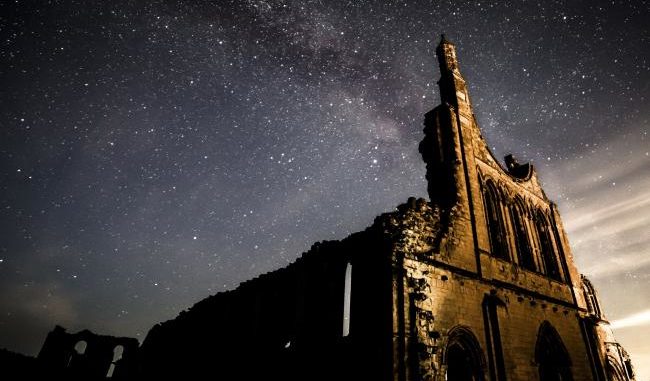
Community groups, residents, businesses and landowners look set to team up to make one of the country’s darkest areas at night even darker in a unique scheme to limit the damaging effects of light pollution.
Bosses at the North York Moors National Park Authority say action is needed to tackle the proliferation of cheap, powerful LED lighting which has led to unprecedented levels of light intensity affecting its dark skies, tourism, education, wildlife habitats, human health and in reducing
carbon emissions from energy wastage.
The initiative, which will initially seek to protect and expand the 1,436sq km park’s darkest area and improve other areas as part of wider landscape projects, will be funded using landscape damage mitigation payments from Sirius Minerals’ polyhalite mine near Whitby.
Speaking ahead of a meeting of the authority next week, its chairman, Jim Bailey, said he was pleased funds from the damaging mine scheme, which attracted opposition on environmental grounds before it was approved in 2015, had the potential to “make a significant difference” to the park.
Mr Bailey said: “We can run a huge amount of light for just a few pennies now so it is important that we look at the damaging light and install the right sort of lighting at the outset.
“If we don’t take decisive action now it could be too late. The availability and use of LED lighting is increasing.”
North Yorkshire County Council has already committed to ensure that all street lighting installed by the authority in the park will be “dark skies friendly”, meaning it will have a lower colour temperature and zero upward light spill.
He said he was delighted the authority looked set to lead the way in launching the programme, in which £100,000 of grants would be offered over the next two years for collective schemes in areas of identified need, which would see systems introduced to cut superfluous lighting.
The grants will be used to fund lighting systems such as motion sensors, lighting of 500 lumens or less unless an exceptional need can be demonstrated and lighting of a colour temperature known as 3,000 kelvin or below.
Grants of up to £2,500 or 50 per cent of total costs will be offered, per premises as part of a community, business, network or other group scheme.
Studies by the authority have revealed while visitors can see up to 2,000 stars at any one time in some areas of the park, there are opportunities to expand dark skies areas, particularly where the park is near urban centres such as Teesside, Whitby and Scarborough.
However, an officers’ report to the authority states while light pollution is a mounting issue there are also increasing concerns about rural security with additional considerations around health and safety which mean “the tendency is to use more light rather than using less or existing light more effectively”.
The report states: “Turning off all lights isn’t a viable option as we all need to consider safety and security. Lighting what you need and when you need it using modern low energy shielded LED lights is the best way to reduce energy consumption and protect dark skies.”
Mr Bailey said: “What I really like about this scheme is that everybody can get involved with it and make a difference.”


Be the first to comment